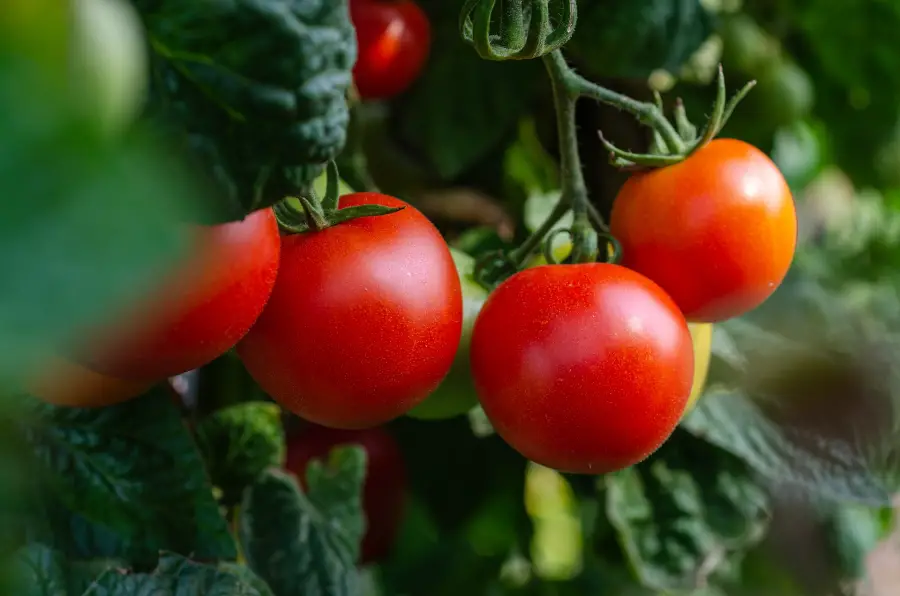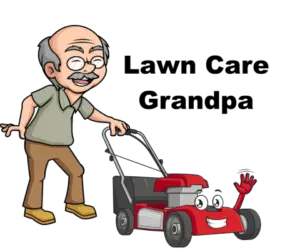Tomatoes are a key ingredient in many dishes and, so, the ability to grow your own is almost priceless. However, growing tomatoes is a “learn-as-you-go-along” process, and that always comes with pitfalls. One of these problems is dried-up tomato plant leaves, which is always a worrying sign.
To rectify tomato plant leaves that are drying up, curling, or turning brown, there are several key issues that may need to be solved. From weather to water, pests to disease the major problems are:
- Lack of water
- Lack of micronutrients
- Pests
- Environmental influences
- Disease
Today’s article takes a look at the core issues that can lead to this. We will then take a look at solutions you can employ to save your tomatoes.

Contents
How Do I Keep My Tomato Plants From Drying?
Waking up one morning to find your tomato garden looking a shadow of its full glory is one of the most devastating things that can ever happen to a gardener. No one could wish that on their worst enemy.
With all of the time, effort, and hopeful expectation that goes into a well cultivated row collection of tomato plants, finding curled, brittle, or brown leaves on yours is disheartening to say the least.
But don’t panic, let’s take a closer look.
While drying tomato leaves looks bad, you must remember that looks can be deceiving.
The easiest way to address the issue of dried tomato plants is to identify the root cause.
The good news is that there are several potential causes that most find are the central issues. The bad news is that some of them are a bit touch-and-go solution-wise.
Problem 1: Lack of water
Naturally, one’s mind would immediately think the issue stems from a lack of water. We’d say that hunch is spot on about 50% of the time.
Without enough water, plants will not be able to operate at full capacity. Eventually, they will have to cut off peripheral functions like chlorophyll production to stay alive. Water is also essential for dissolving key nutrients in the soil. Without it, roots would not be able to take up these nutrients, which eventually leads to wilting.
Typically, the wilt from a lack of water will feature leaves curling downward. There might be a bit of yellowing as well due to a lack of Nitrogen (which is necessary for chlorophyll production).
But wait…there’s a bit of a twist.
You see, overwatering might also lead to the plant being dehydrated!
Confused? Don’t be, it’s quite simple.
Overwatering, combined with poor soil drainage, may lead to your tomato plants experiencing root rot, something they’re very prone to. In order to protect itself, the plant constricts its transport vessels (xylem tubes) to avoid taking up any infections or fungi.
The only problem is that this also cuts off water uptake, leading to the same problems detailed above. The bed might be flooded with water, but the plant will remain thirsty.
Solution
You must take care to monitor your watering volumes. Tomatoes have a watering “sweet spot”, so to speak. Not too little, not too much.
Another overlooked aspect is the weather conditions. Adjust water levels according to the season. The hotter it is, the more you water and vice versa. You might not have to water on days where heavy rains are forecasted.
Planting tomatoes in late winter is one of the underlying causes of root rot-related issues. You might want to plant your tomatoes later when it’s warmer.
If you’ve established that overwatering is the problem, you should let the soil drain out and give the plants time to heal themselves. You should then make changes to the soil to boost drainage. Clay soils typically retain water for a bit too long, so we recommend introducing a bit of sandy soil on top.
For a more in depth treatment of watering and caring for you tomatoes, the University of Tennessee has this great resource found here.
Problem 2: Lack of micronutrients
As we’ve already seen, plants require nutrients to survive. We’ve already taken a glimpse at uptake obstruction. Now, let’s look at cases when certain nutrients are missing from the soil entirely.
Plants require a lot of nutrients, and tomato plants are especially demanding.
Many gardeners, even experienced ones, may make the mistake of assuming a lack of magnesium or calcium. However, this issue manifests itself through yellowing leaves long before it dries out.
A better explanation is likely a lack of trace nutrients like boron and molybdenum. These nutrients are usually available in garden soils but they may be diminished in overworked soils, especially if compost and fertilizer are not added to replenish them.
Solution
This problem can be solved by replenishing the soil with rich sources of micronutrients. Introduce compost, as well as various leaf and wood mulches to restore the nutrient content. You can also use fertilizers like Dr. Earth Organic Tomato, Vegetable & Herb (found on Amazon) to boost the trace nutrient content.
We also recommend that you avoid commercial potting mixes/soils, which may lack these micronutrients. If you must use them, then you will also need to use fertilizer or well-aged compost.
Finally, if space permits, you might want to practice seasonal crop rotation. Mixing up the kinds of plants grown in a particular spot is a great way to guard against soil degradation and nutrient loss. Crop rotation also reduces the risk of festering fungi that cause diseases like Blight.
To read more great articles like this one…
- How To Save A Dying Vine By Knowing What Ails It
- Is There A Lemon Orange Tree? (Experts Explain)
- What Is Eating My Strawberries? Let’s Find Out!
Problem 3: Pests
Various pests can play a role in drying out your tomato leaves.
Firstly, we have moths and butterflies. During breeding seasons, these insects may lay their eggs on or near your tomato beds. Eventually, larvae (caterpillars) emerge from these eggs and they begin to feed on various plant matter.
Caterpillars will eat continuously until it is time for them to enter the pupa (cocoon) stage of their life cycles.
Now, some caterpillars will use leaves as a basis for these cocoons to protect themselves from would-be predators. Tomato leaves are a particular favorite for various moth species. Once the caterpillar finds an ideal leaf, it will curl the leaves up and produce glue-like webbing to seal itself inside the leaf until it is ready to emerge as a fully-developed moth or butterfly.
The occupied leaf will soon start looking dried out. Closer inspection may reveal the webbing, which is a giveaway sign.
Another problematic pest is the leafhopper, which bites tomato plants to feed on the sap.
While leafhoppers are largely harmless, a few individuals may carry a virus that causes a disease, known as curly top. Curly top causes the plant to stop growing and halts the production of new fruit. Most of the plant’s energy is then refocused to help existing fruit reach maturation.
The disease is called “curly top” because it causes leaves at the top of the tomato plant to curl up and wilt. Another giveaway sign of curly top is the emergence of side-shoots. These shoots are a plant’s attempt to reestablish itself, something it may (or may not) achieve. However, in most cases, there’s no coming back if a plant suffers from curly top.
You also have russet mites, tiny bugs that can suck the life out of your tomato leaves. The tricky part about this problem is that you will almost always spot mite damage before you detect the mites themselves…the bugs are that tiny.
Solution
Pests are a natural part of gardening, so there is very little you can do to prevent them from heading for your plants.
The good thing is that caterpillars, for example, won’t have a noticeable effect on a tomato plant’s growth and eventual yield unless you’re dealing with a full-scale invasion, which is extremely rare. In most cases though, caterpillars are just an annoyance.
Leafhoppers are also not a major threat unless a lot of them are carrying the curly top virus. You’ll have to pay close attention to your garden. If less than 10% of your tomato plants are exhibiting curly top symptoms, there’s no need to worry too much.
Problems arise if a significant (and increasing) number of plants start showing signs of curly top. In such a case, we recommend that you go on the offensive and take out the leafhoppers attacking your garden. Pyrethrin insecticide is a good choice for tackling these critters.
Luckily, though, curly top does not hop (no pun) from plant to plant directly. It also doesn’t pass down to the fruit either, meaning you can plant seeds from tomatoes harvested from a curly top plant without any problems.
Russet mites can be dealt with using a sulfur-based insecticide.
Problem 4: Environmental Influence

Sometimes, tomato plant leaves will dry up and curl as a response to the surrounding conditions.
Firstly, if it is too hot, some leaves may curl up to minimize their surface area and, ultimately, their rate of light absorption. Tomato plants, in particular, only need so much sunlight before they are in danger of burning up. To protect themselves, they may curl upwards and prevent sunlight from reaching their chlorophyll.
Secondly, tomato leaves may also curl up and appear dry to minimize transpiration when surrounding temperatures are high and humidity is low. Transpiration is the movement of water (in the form of vapor) from the inside of the leaf to the surrounding atmosphere via leaf pores called “stomata”.
When humidity is low, the plant will have a higher concentration of water than the surrounding air. At this point, the stomata will spread open to allow water vapor to escape.
In order to regulate transpiration, tomato leaves have evolved to curl upwards. This keeps the rate of water loss low in case the plant fails to get watered.
Leaves will also curl up when there is a lot of wind. Wind will blow transpired vapor from the leaves at a faster rate, which stimulates even more transpiration.
Solution
There’s not much you can do about weather conditions, except for constructing a greenhouse.
We recommend that you monitor your watering quantities and frequency. Usually, when leaves are drying up like this, it is a sign that transpiration is occurring at a faster rate than water uptake. It is not a cause for alarm at all.
Problem 5: Disease
Unfortunately, tomato plants are very sensitive and susceptible to numerous diseases.
One of the most common problems tomato farmers experience is blight, a disease that is caused by certain fungal spores. These spores typically favor the warm and moist conditions that are common in low-drainage soils.
Blight manifests itself through a series of holes and yellow spots on leaf surfaces. These spots then rapidly spread to other parts of the leaf until it is completely dry. The dried leaves eventually fall off.
Solution
The best way to deal with blight is to prevent it altogether.
Ensure that your soil has good drainage to make it difficult for fungi to take hold and cause problems. You should also make use of leaf or wood mulch to prevent splashing soil water onto the tomato leaves. Water droplets can easily transport spores onto leaves in this way.
Once blight has taken hold, you must act quickly. Remove all affected leaves and fruits to contain the spread. Do not mulch these back into the soil because you will perpetuate the problem. Leaves, branches, and fruits with blight must be burnt.
Crop rotation is also key. Try to avoid growing tomatoes in the same section year after year to give the soil time to rid itself of the fungi.
Finally, ensure minimal splashing when watering. We recommend that you use a soaker hose rather than a sprinkler system. You should also avoid watering tomato leaves in general.
The Final Touches On Tomato Plant Leaves Drying Up…
Tomato plants are not considered difficult to grow and many gardeners with large and small plots have great success with them. If you are having problems, some of these fixes can set you on the right path and before long you too can have a high yield in from your tomato plants.
The leaves many times are the bellwethers of most any plant. Tomato plant leaves are no exception. Keep an eye on the leaves and follow some of these tips to ensure your plants are as healthy as they can be.
You will also like…
- Japanese Maple Syrup? Is There Syrup From Japanese Maples?
- Can You Eat Cabbage Leaves – Are The Outer Ones Edible?
- Can You Put Peanut Shells In Compost Piles? Experts Explain
References
https://www.gardentech.com/blog/pest-id-and-prevention/fight-blight-on-your-tomatoes
https://homeguides.sfgate.com/tomato-plants-symptoms-dry-leaves-55419.html
https://www.youtube.com/watch?v=9JTsQMB8H7M&ab_channel=MIgardener
